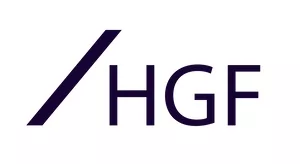- with readers working within the Retail & Leisure industries
G1/24, described as one of the most important cases in decades, relates to how claims of patents are to be interpreted by the Boards of Appeal and, by extension, all organs of the European Patent Office.
The referral to the Enlarged Board came from a decision of Technical Board of Appeal 3.2.01 which identified diverging strands of case law concerning claim interpretation. A first strand suggests that the Claims should be interpreted in isolation and the description should only be consulted to resolve an ambiguity within a claim. The second strand of case law suggests that the Claims are always to be interpreted in light of the description.
A vexed question for the Boards of Appeal under each strand has been what is the legal basis within the European Patent Convention for claim interpretation? On the one hand, A.841 has been referred to and on the other hand A.692 and the Protocol on its interpretation3.
The Enlarged Board has now resolved the issue by saying that neither A.84 nor A69 provides unambiguous legal basis for claim interpretation at the EPO but that, nevertheless, the description and drawings must always be referred to. This brings the EPO's approach into conformity with the approach taken by the UPC Court of Appeal in NanoString Technologies – v- Genomics, which also held that the description must always be used as explanatory aid for claim interpretation and not only to resolve ambiguities in claims.
The issues before the Board of Appeal
In the underlying case (in which the Patentee was represented by HGF) the Claims included a term 'gathered sheet'. It was accepted by all parties that the term 'gathered sheet' had a well-known meaning to the skilled person in the field of cigarettes, and specifically so-called "heat-not-burn" tobacco products.
However, the description contained a paragraph which was alleged to broaden the definition beyond the skilled person's understanding of the term in isolation.
If the broader definition were to be applied the claims lacked novelty whereas if the narrower, accepted, definition applied the claims were patentable.
In light of the diverging strands of case law, the Board of Appeal referred the following questions to the Enlarged Board of Appeal:
Question 1 Is A.69(1), second sentence EPC and Article 1 of the Protocol on the Interpretation of Article 69 to be applied to the interpretation of patent claims when assessing patentability of an invention under Articles 52 to 57 EPC?
Question 2 May the description and figures be consulted when interpreting the claims to assess patentability and, if so, may this be done generally or only if the person skilled in the art finds a claim to be unclear or ambiguous when read in isolation?
Question 3 May a definition or similar information on a term used in the claims which is explicitly given in the description be disregarded when interpreting the claims to address patentability and, if so, under what conditions?
The Decision of the Enlarged Board
The Enlarged Board, in a remarkably brief decision, has found the following:
Question 3 is inadmissible (reason 1); Question 1 is to be answered in the negative (reason 9); and Question 2 is to be answered in the positive (reason 18).
Question 3 This was found to be inadmissible because an answer to the question was not necessary to resolve the matter in dispute.
Question 1 The Enlarged Board found that A.69 and its Protocol was concerned with infringement matters before national courts and the UPC. This was based upon the wording of the article itself and its Protocol, the travaux preparatoires and its location within the EPC (Chapter III).
Question 2 The Enlarged Board criticised both A.84 and A.69 for being inappropriate basis and instead referred to a discussion of interpretation based on some case law of the Boards of Appeal. From this line of case law, the Enlarged Board extracted principles of claim interpretation, as follows:
- The claims are the starting point and the basis for assessing the patentability of an invention under Articles 52 to 57.
- The description and any drawings are always referred to when interpreting the claims, and not just in the case of ambiguity.
The first principle was considered by the Enlarged Board to be a settled point (reason 13).
The line of case law which suggests that the description is referred to only to resolve an ambiguity was criticised, and rejected, by the Enlarged Board because it was inconsistent with A.69 and the practice of the courts of the contracting states and the UPC (reason 15).
Endorsing the philosophy of harmonisation across the contracting states of the EPC, the Enlarged Board went on to state that it is a most unattractive proposition for the EPO deliberately to adopt a practice of claim interpretation which might be contrary to that of the national courts of the contracting states and the UPC (reason 16). It also found that the way to resolve a lack of clarity in a claim is by amendment (reason 20) and that this is paramount in the importance of the examining divisions carrying out high quality examination.
The order of the Enlarged Board is as follows:
The claims are the starting point and the basis for assessing the patentability of an invention under Articles 52 to 57. The description and any drawings shall always be consulted to interpret the claims when assessing the patentability of an invention under Articles 52 to 57 EPC, and not only if the person skilled in the art finds a claim to be unclear or ambiguous when read in isolation.
Discussion
The Decision of the Enlarged Board of Appeal is notable for many reasons.
Firstly, it has accepted that there is no legal basis within the EPC for arriving at its conclusion, rather it has extracted some principles which appear to have been developed by the case law.
Secondly, it has given great weight to the perhaps laudable aim of providing consistency between the EPO and the downstream courts which are charged with determining infringement of the patents granted by the EPO. However, this reasoning in part seems to be based on a logical inconsistency: on the one hand A.69 is not basis for the EPO to interpret claims, whereas on the other hand ignoring the description (except in cases of ambiguity) for claim interpretation is inconsistent with A.69!
Thirdly, it is questionable whether the order appears to open up the possibility of proprietors seeking to apply a narrow interpretation to a broad term in a claim, based on a narrowing definition in the description (i.e. in the opposite sense to the underlying case).
Fourthly, it is possible that the Examining Division of the EPO might take the ratio as meaning that the description should always be brought into conformity with the claims (a question which was expected to be referred to the Enlarged Board in an earlier case).
Fifthly, on a practical level, this may increase the workload for examiners and the complexity of matters before the Opposition Divisions and Boards of Appeal as proprietor's will no longer be able to simply state that the claims are clear, in and of themselves.
Finally, this may signal that the EPO, and in particular the Technical Boards of Appeal, have an increased focus on the practice of the national courts of the contracting and states and, most importantly, the UPC.
As ever with decisions of the Enlarged Board of Appeal we will have to wait to see the impact at a practical level before the Technical Boards of Appeal, Opposition Divisions and Examining Divisions.
Footnotes
1. The claims shall define the matter for which protection is sought. They shall be clear and concise and be supported by the description.
2.(1)The extent of the protection
conferred by a European patent or a European patent application
shall be determined by the claims. Nevertheless, the description
and drawings shall be used to interpret the claims.
(2)For the period up to grant of the European
patent, the extent of the protection conferred by the European
patent application shall be determined by the claims contained in
the application as published. However, the European patent as
granted or as amended in opposition, limitation or revocation
proceedings shall determine retroactively the protection conferred
by the application, in so far as such protection is not thereby
extended.
3. Article 1
Article 69 should not be
interpreted as meaning that the extent of the protection conferred
by a European patent is to be understood as that defined by the
strict, literal meaning of the wording used in the claims, the
description and drawings being employed only for the purpose of
resolving an ambiguity found in the claims. Nor should it be taken
to mean that the claims serve only as a guideline and that the
actual protection conferred may extend to what, from a
consideration of the description and drawings by a person skilled
in the art, the patent proprietor has contemplated. On the
contrary, it is to be interpreted as defining a position between
these extremes which combines a fair protection for the patent
proprietor with a reasonable degree of legal certainty for third
parties.
Article 2
Equivalents
For the purpose of determining the extent of protection
conferred by a European patent, due account shall be taken of any
element which is equivalent to an element specified in the
claims.
The content of this article is intended to provide a general guide to the subject matter. Specialist advice should be sought about your specific circumstances.


